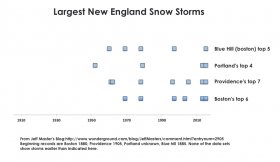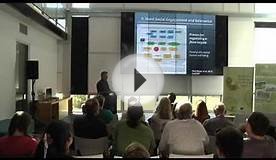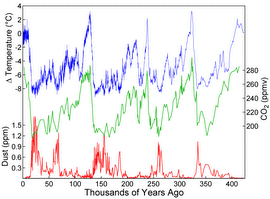Global weather changes
 Generally, climate and weather watchers have noticed that arid regions are drier, wetter regions are wetter, and many feel this is a consequence of global warming. Increased temperatures may increase the intensity of precipitation; this is a matter of physics. As air temperature increase, the air is able to hold more water, and this increase is not linear; a little more heat means a lot more moisture.
Generally, climate and weather watchers have noticed that arid regions are drier, wetter regions are wetter, and many feel this is a consequence of global warming. Increased temperatures may increase the intensity of precipitation; this is a matter of physics. As air temperature increase, the air is able to hold more water, and this increase is not linear; a little more heat means a lot more moisture.
Also, the overall pattern of movement of air currents seems to be affecting the distribution of precipitation. For example, the main jet stream that influences weather in the Northern Hemisphere seems to be more often wavy and slower moving. This causes low pressure systems that bring precipitation to move more slowly, so a given area may have both more intense rainfall and rainfall over a longer period of time. Nonetheless, while an increasing number of climatologists are thinking that global warming is changing the weather, it has only been happening for a few years, and it is a system with a high level of natural variability. This means the basic observational data may be difficult to bring to bear on understanding what is going on. The physics predict these changes. Modeling of climate has demonstrated a high likelihood of these changes. Direct observations are beginning to show these changes.
In a recent paper, “Quasi-resonant circulation regimes and hemispheric synchronization of extreme weather in boreal summer, ” Dim Coumou, Vladimir Petoukhov, Stefan Rahmstorf, Stefan Petri, and Hans Joachim Schellnhuber noted the emergence of more frequent “Rossby Waves” in the jet stream, indicating that these waves have become more common and more persistent. They said, “We show that high-amplitude quasi- stationary Rossby waves, associated with resonance circulation regimes, lead to persistent surface weather conditions and therefore to midlatitude synchronization of extreme heat and rainfall events. Since the onset of rapid Arctic amplification around 2000, a cluster of resonance circulation regimes is observed involving wave numbers 7 and 8. This has resulted in a statistically significant increase in the frequency of high- amplitude quasi-stationary waves with these wave numbers. Our findings provide important new insights regarding the link between Arctic changes and midlatitude extremes.” (I elaborate on this finding here: More Research Linking Global Warming To Bad Weather Events.)


 Climate change is a significant and lasting change in the statistical distribution of weather patterns over periods ranging from decades to millions of years. It may be a change in average weather conditions, or in the distribution of weather around the average conditions (i.e., more or fewer extreme weather events). Climate change is caused by...
Climate change is a significant and lasting change in the statistical distribution of weather patterns over periods ranging from decades to millions of years. It may be a change in average weather conditions, or in the distribution of weather around the average conditions (i.e., more or fewer extreme weather events). Climate change is caused by...